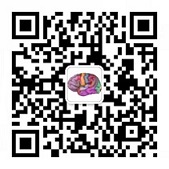KCNQ2
基因产物:钾离子通道(Kv7.2)。
蛋白功能:主要在大脑皮质和海马的突触后中表达,和KCNQ3结合是构成神经元M型钾离子通道的分子基础,激活后产生的M电流是一种电压及时间依赖型、低阈值、慢激活、慢去活、非失活的外向钾电流,能被M型胆碱受体激动后抑制[1]。
相关疾病:肌纤维颤搐(AD)[3];自限性家族性新生儿癫痫(AD)[4];自限性家族及非家族性婴儿癫痫(AD)[5]、伴中央颞区棘波的儿童癫痫 (原先习惯叫BECT)易感基因?(AD)[6];发育性癫痫性脑病7型(部分可表现为大田原综合征(AD)、West 综合征(AD)[2]等)。
突变数据库:ClinVar数据库。
相关临床研究:PubMed数据库(PMID: 30771507 (Eur J Med Genet. 2019));
用药提醒:部分对钠通阻滞剂有一定效果。
讨论版块:点击进入KCNQ2基因突变讨论版块。
参考文献
- Cooper, E.C., et al., Colocalization and coassembly of two human brain M-type potassium channel subunits that are mutated in epilepsy.Proc Natl Acad Sci U S A, 2000. 97(9): p. 4914-9.
- Kato, M., et al., Clinical spectrum of early onset epileptic encephalopathies caused by KCNQ2 mutation.Epilepsia, 2013. 54(7): p. 1282-7.
- Wuttke, T.V., et al., Peripheral nerve hyperexcitability due to dominant-negative KCNQ2 mutations.Neurology, 2007. 69(22): p. 2045-53.
- Singh, N.A., et al., A novel potassium channel gene, KCNQ2, is mutated in an inherited epilepsy of newborns.Nat Genet, 1998. 18(1): p. 25-9.
- van Roest, A., et al., The clinical and genetic spectrum in infants with (an) unprovoked cluster(s) of focal seizures. Eur J Paediatr Neurol, 2020. 24: p. 148-153.
- Neubauer, B.A., et al., KCNQ2 and KCNQ3 mutations contribute to different idiopathic epilepsy syndromes. Neurology, 2008. 71(3): p. 177-83.

 English
English  简体中文
简体中文 